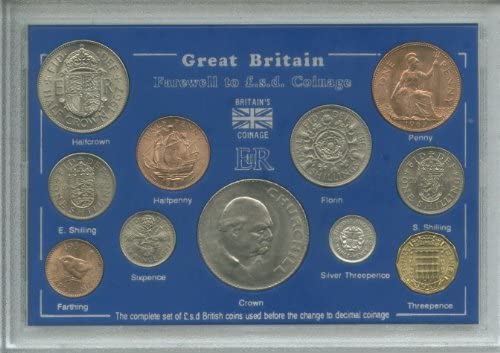I’ve realised I’ve never made a post about Bitcoin or other cryptocurrencies. Bitcoin and other cryptocurrencies differ from normal currencies issued by countries because traditionally, currencies were based on the concept of a tie into existing resources.

British currency prior to decimalisation
Prior to decimalisation, which was the turning point in the UK monetary system away from a currency that was based on a division of sterling silver and had roots in Roman currency.
The pound denoted the weight of sterling silver. One libra (Latin for scales and the Latin term for pound) of sterling silver to be precise.
Shillings come from the Latin Solidus, which is Latin for solid coin and prior to the Carolingians adopting the silver standard, these coins were gold and were used to pay soldiers.
Denari means ten in Latin in Roman currency there was an As, which in turn means bronze. The denari is often called the penny.
So prior to decimalisation, the British currency was comprised of 20 shillings to the Pound, 240 pennies to the Pound.
Decimalisation made everything a division of 10 and also removed the Pound from the silver (and gold) standard. Other countries did the same to remove themselves from precious metals, since anyone could start a run on the banking system by demanding their silver or gold be taken out instead.

Cryptocurrency
Countries around the world have a system of currency which initially started as an exchange system between goods and services. Money should be a finite system, since every country that trades with another does so on an exchange rate, or how much money that currency is worth in exchange with another.
However, in the past, China had a problem where wars had drained the account of the rulers, so they simply solved the problem by creating more money. This solution eventually let to economic collapse as it led to hyperinflation. Likewise the German government did the same after WW1, which led to the collapse of the economy and the rise of Adolf Hitler in WW2.
Cryptocurrency can be treated like a currency, so it can be bought and sold as if it were made in a country, but it is entirely created by computers.
However, unlike traditional bank accounts, cryptocurrency is untraceable. If you are ransomed and the blackmailer demands you pay their account, the money is recoverable and traceable if it’s a traditional bank account. However, if it’s a cryptocurrency it is impossible to find out where that money goes. Akin to you giving someone a gold bar and they melt it down to make something else, it’s not going to be traceable.

Bitcoin mining
Bitcoin “mining” involves calculating complex mathematical algorithms (called hashes) using a computer. In it’s rawest form, electricity is turned into Bitcoin.
Bitcoin is an exponential currency, meaning that when it first started out, mining was easy and had a quick conversion from computing power to currency, but gets progressively harder each time to create enough money from the hardware.
In the early days, you could use a CPU (Central Processing Unit) in an idle computer to convert electricity to Bitcoin. These days, in order to produce 75p worth of Bitcoin on a high end desktop PC would take a whole day, which of course is not energy efficient unless you aren’t paying for that energy.
The next method was GPU (Graphics Processing Unit) mining, which used the way graphics cards use to render complex patterns to a screen, this gave a leap in performance because a high end graphics card can do much more in computational terms than a CPU.
However, in terms of efficiency and raw computational power, a dedicated mining processor had been developed called an APU (ASIC – Application Specific Integrated Circuit Processing Unit)
The number of hashes per second defines how quickly and how much you will make from mining Bitcoin. These days, the hash processing rate in APUs is recorded in TH/s or Terahashes per second. In computer language 1TH = 1024GH, 1GH=1024MH, 1MH=1204KH and 1KH = 1024H.
So one of the latest APU units, called an Antminer S19J which can process 110TH/s and costs £16,000. Currently, running this machine for 1 year would raise 0.1508 BTC which is currently worth £6,000 but the electricity used to make that £6,000 would be £7,000.
Conclusion
Cryptocurrencies can be of benefit in countries where the local currency isn’t stable, and the transactions are anonymous.
Additionally, being a currency that can be mined gives it a distinct advantage as a passive income stream if you can source cheap electricity.
However, unlike the currency market which is controlled to prevent pump and dump scams, the cryptocurrency market is not controlled, so you can be convinced to invest a load of money into the coinage and then find the next day it is worthless.
Another problem with cryptocurrency mining is when computers are hacked into to run a miner on a server or in some cases, run the miner in unsuspecting user’s web browsers.

